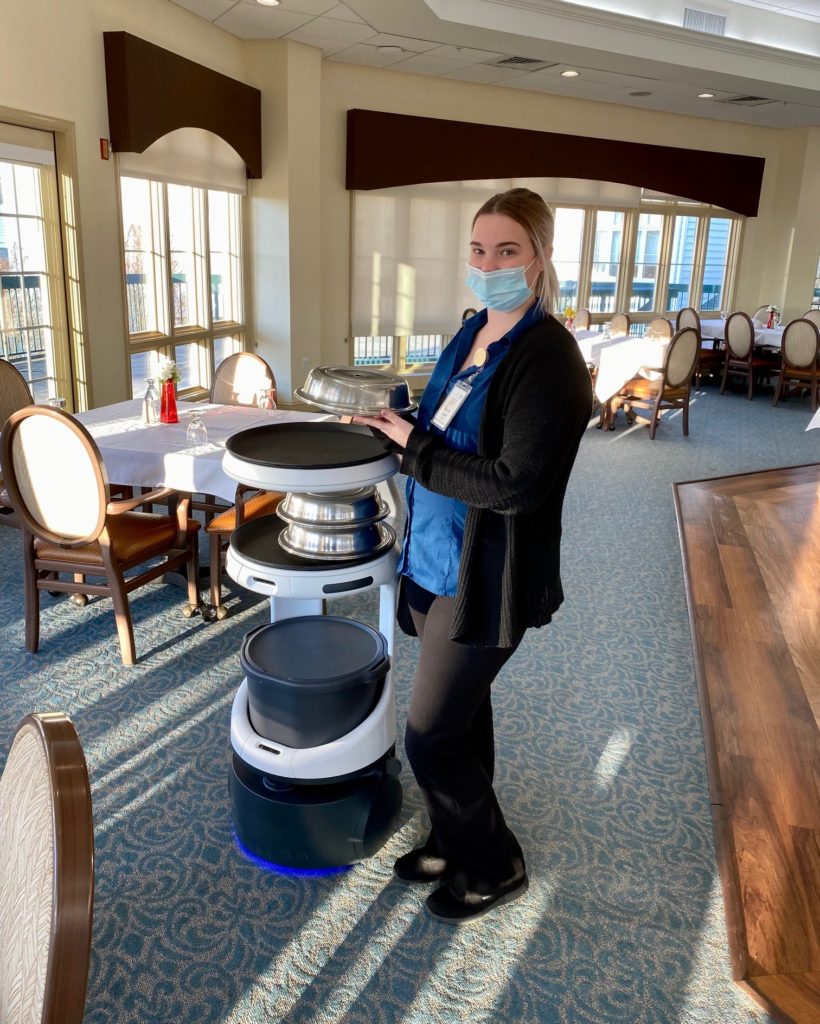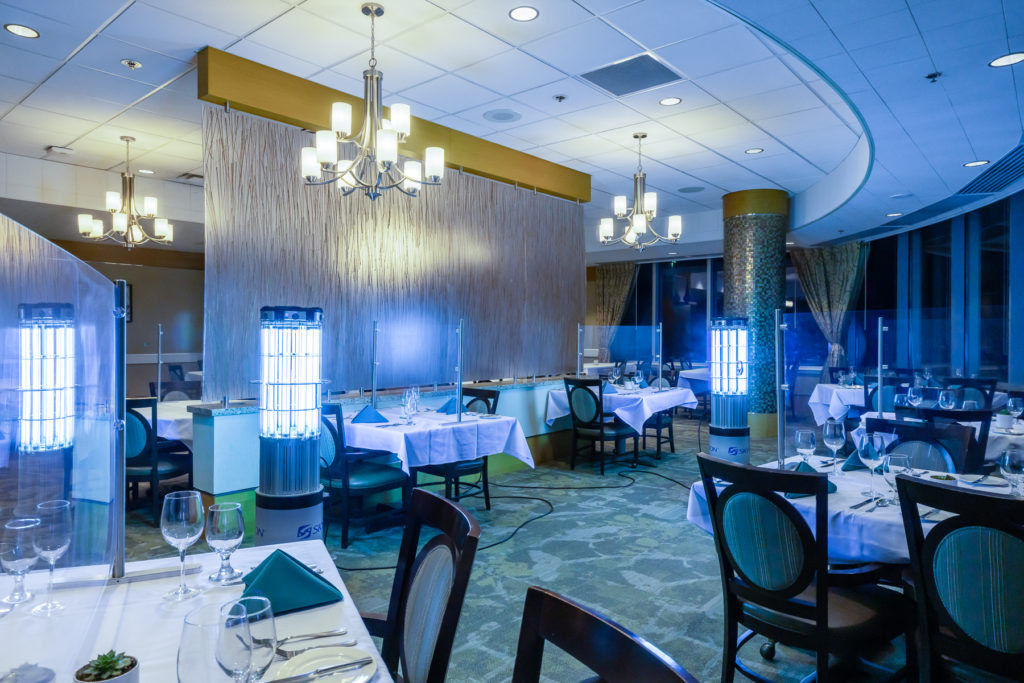The Covid-19 pandemic is still putting pressure on every facet of senior living operators, particularly as it relates to staffing, occupancy, and expenses. Technology is helping to fill the gap.
Across the industry, senior living operators are exploring robotics and software systems aimed at boosting efficiency and helping workers spend more time with residents.
Operators implemented many of these forward-thinking technological solutions as an emergency response to the Covid-19 pandemic. But looking ahead, regularly putting money toward technology will become a must-have if operators hope to keep up with the rest of the industry, according to Nexus Insights Founder and National Investment Center for Seniors Housing & Care (NIC) Co-Founder Bob Kramer.
“Companies will have to invest in technology,” Kramer told Senior Housing News. “If you don’t have it you’re just not going to be competitive.”
LeadingAge SVP of Technology and Business Strategy Majd Alwan sees three main areas where operators should focus their efforts: HR software that allows staff to voice their concerns, schedule shifts and get paid when they want; robotic process automation (RPA) software to automate digital tasks such as telehealth visits; and deploying physical robots in communities.
Today, several senior living operators have put more time and resources toward their technological capabilities, including in those areas. They include The Springs Living, Asbury Communities, and Transforming Age.
Rise of the robots
While senior living operators have long explored ways to implement robotics into their operations, progress over the years has been slow. But with the pandemic and its pressures on staffing, some are taking another look at whether robots have a place in senior living after all.
For example, The Springs Living has deployed Servi robots from Bear Robotics to run food between the kitchen and the dining room so that staff can spend more time with residents.
Each Servi robot can carry food from the kitchen on three tiers, and then return used dishes once residents are done with their meals. The robots can hold up to 66 pounds and have a battery life of up to 12 hours under typical use.
The McMinnville, Oregon-based provider started with a pilot program late last year, and now deploys Servi robots in nine of its 18 communities, according to The Springs Living COO Brenda Connelly.
“The reception from the residents and staff was interesting … they are very curious about the technology,” Connelly told SHN. “But with that curiosity came an understanding of the value they provided.”
Asbury also uses food service robots in its dining rooms. The company first piloted using the robots in its culinary program, and before that, the organization explored using robots to greet visitors.
Residents had questions about the robots from the moment they were implemented, according to Todd Andrews, who is president of Asbury’s continuing care retirement community (CCRC) division.
“The first question you get is, ‘are you eliminating jobs to do this?’ ” Andrews told SHN.
But after five days of using the robots in the community’s dining rooms, it was clear that they only supplemented daily operations instead of replacing jobs.
“The staff was jazzed about it,” Andrews said.
As were residents, who nicknamed one of the robots Rosie in reference to the robot from “The Jetsons.”
 Asbury Communities
Asbury CommunitiesWith a successful pilot under its belt, Asbury will send its dining robots into five additional communities this April.
Robotics are also finding their way into other dining programs, such as during the 2022 Beijing Winter Olympics, where automatons served meals to attendees in light of Covid-19 infection control protocols.
Bellevue, Washington-based Transforming Age is yet another operator that implemented robots with the rise of the pandemic. The organization deployed Skytron UV robots to sanitize resident rooms at the height of the Covid-19 risk.
Transforming Age President and CEO Torsten Hirche believes that the more operators can delegate to robots mundane tasks such as vacuuming or dishwashing, the better.
“People say we’re in the people business, which is true,” Hirche said. “And [they] say that people will always be served by people, which is flat out not true.”
Many people have a dishwasher or a microwave at home and many people use an elevator, Hirche pointed out, adding that these kinds of tools have been widely used and accepted for decades. Should they advance enough, robots would be no different.
 TransformingAge
TransformingAgeWhile Hirche is skeptical that the senior living industry will see the rise of a true robotic maid a la Rosie from The Jetsons any time soon, he does believe that exploration in robotics will result in boons for the industry.
“Now, will we have the Elon Musk robot that does it all in the next 10 years? Maybe not,” he said. “But I think there are a lot of solutions that can make peoples’ lives easier.”
Operators are also implementing technology in ways that residents can’t see, such as with software to help recruit employees, assist scheduling, eliminate paperwork, improve resident health, and streamline pay periods.
The Springs Living, for instance, leverages technology firm SilkRoad for recruiting, training, and performance management.
“We’ve been leveraging SilkRoad for many, many years,” said Connelly of the recruiting, onboarding, training, and management software.
Newer software solutions address both resident care and employee benefits.
The Springs Living uses the health services program PointClickCare to monitor and track residents to better serve their needs on a mobile device. The operator also uses Payactiv, a payroll solutions software that allows staff to choose when they are paid, including the day a shift is completed.
“We know that funds are very important, especially as expenses are rising,” said Connelly.
While these capabilities were once a novelty for senior living operators, they are now a must-have, according to Kramer.
“Little features like that were once nice to have, but now you’re going to have to [have them],” he said.
‘Fail fast’
With occupancy recovering and staffing costs still high, the senior living industry is not out of the woods with regard to Covid-19 – far from it.
While the industry marches toward post-Covid recovery, some leaders see the possibility of using even more technology as a solution to these problems in and unto itself.
While implementing new technology is exciting and useful, Alwan cautioned operators from getting too over their skis. He gauges his feelings toward the technology in senior living as “70% excitement, 30% caution.”
“It has to be introduced as a tool to help staff to be more efficient and to spend their time on meaningful interactions with the residents and their families,” Alwan told SHN. “Because, if the technology is perceived as a threat, it’s going to backfire.”
He noted that due to regulatory oversight and an emphasis on resident safety, he does not see a future with fully autonomous senior living akin to automotive production. The key will be finding the correct application for such innovations.
For example, the idea of utilizing robotic technology to automate the dining experience. It doesn’t eliminate human servers – it just helps with shuttling dishes back and forth, he pointed out.
“A person is there talking to the residents, engaging with them meaningfully – it doesn’t take that away. It’s fulfilling and it generates efficiencies,” he said.
Asbury Communities operates under a “fail fast” philosophy when it comes to exploring new technology, according to Andrews. This means the company’s leaders pull the plug immediately when a new idea doesn’t work.
“There’s nothing I hate more than the never-ending pilot,” Andrews told SHN. “We’ve tried things – some have failed, and some have been great.”
Credit: Source link




















